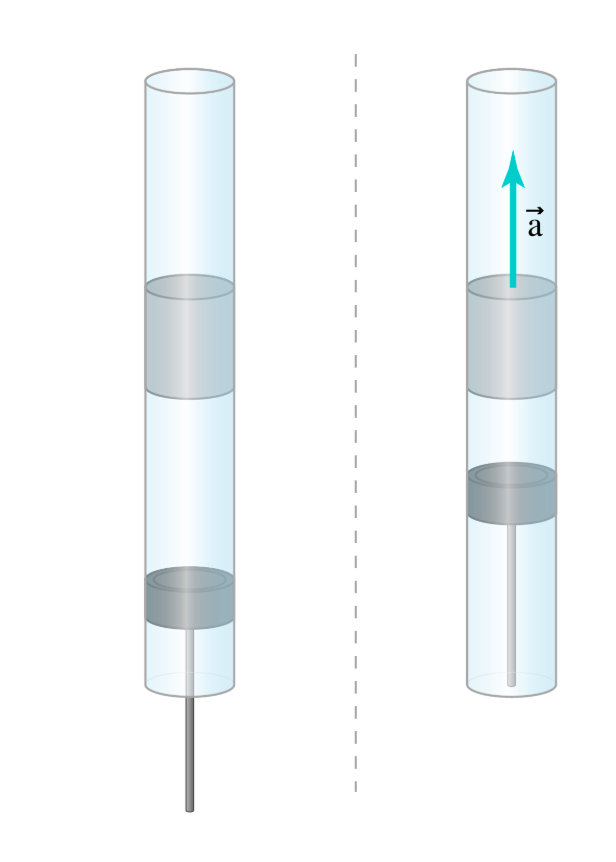Attempt 2 A 0.527 kg0.527 kg metal cylinder is placed inside the top of a plastic tube, the lower end of which is sealed off by an adjustable plunger. The cylinder comes to rest some distance above the plunger. The plastic tube has an inner radius of 6.56 mm6.56 mm and is frictionless. Neither the plunger nor the metal cylinder allow any air to flow around them. If the plunger is suddenly pushed upwards, increasing the pressure between the plunger and the metal cylinder by a factor of 2.792.79, what is the initial acceleration ?a of the metal cylinder? Assume the pressure outside of the tube is 1.00 atm1.00 atm.
Kinetic Theory of Gas
The Kinetic Theory of gases is a classical model of gases, according to which gases are composed of molecules/particles that are in random motion. While undergoing this random motion, kinetic energy in molecules can assume random velocity across all directions. It also says that the constituent particles/molecules undergo elastic collision, which means that the total kinetic energy remains constant before and after the collision. The average kinetic energy of the particles also determines the pressure of the gas.
P-V Diagram
A P-V diagram is a very important tool of the branch of physics known as thermodynamics, which is used to analyze the working and hence the efficiency of thermodynamic engines. As the name suggests, it is used to measure the changes in pressure (P) and volume (V) corresponding to the thermodynamic system under study. The P-V diagram is used as an indicator diagram to control the given thermodynamic system.
A 0.527 kg0.527 kg metal cylinder is placed inside the top of a plastic tube, the lower end of which is sealed off by an adjustable plunger. The cylinder comes to rest some distance above the plunger. The plastic tube has an inner radius of 6.56 mm6.56 mm and is frictionless. Neither the plunger nor the metal cylinder allow any air to flow around them.
If the plunger is suddenly pushed upwards, increasing the pressure between the plunger and the metal cylinder by a factor of 2.792.79, what is the initial acceleration ?a of the metal cylinder? Assume the pressure outside of the tube is 1.00 atm1.00 atm.

Trending now
This is a popular solution!
Step by step
Solved in 4 steps with 4 images









